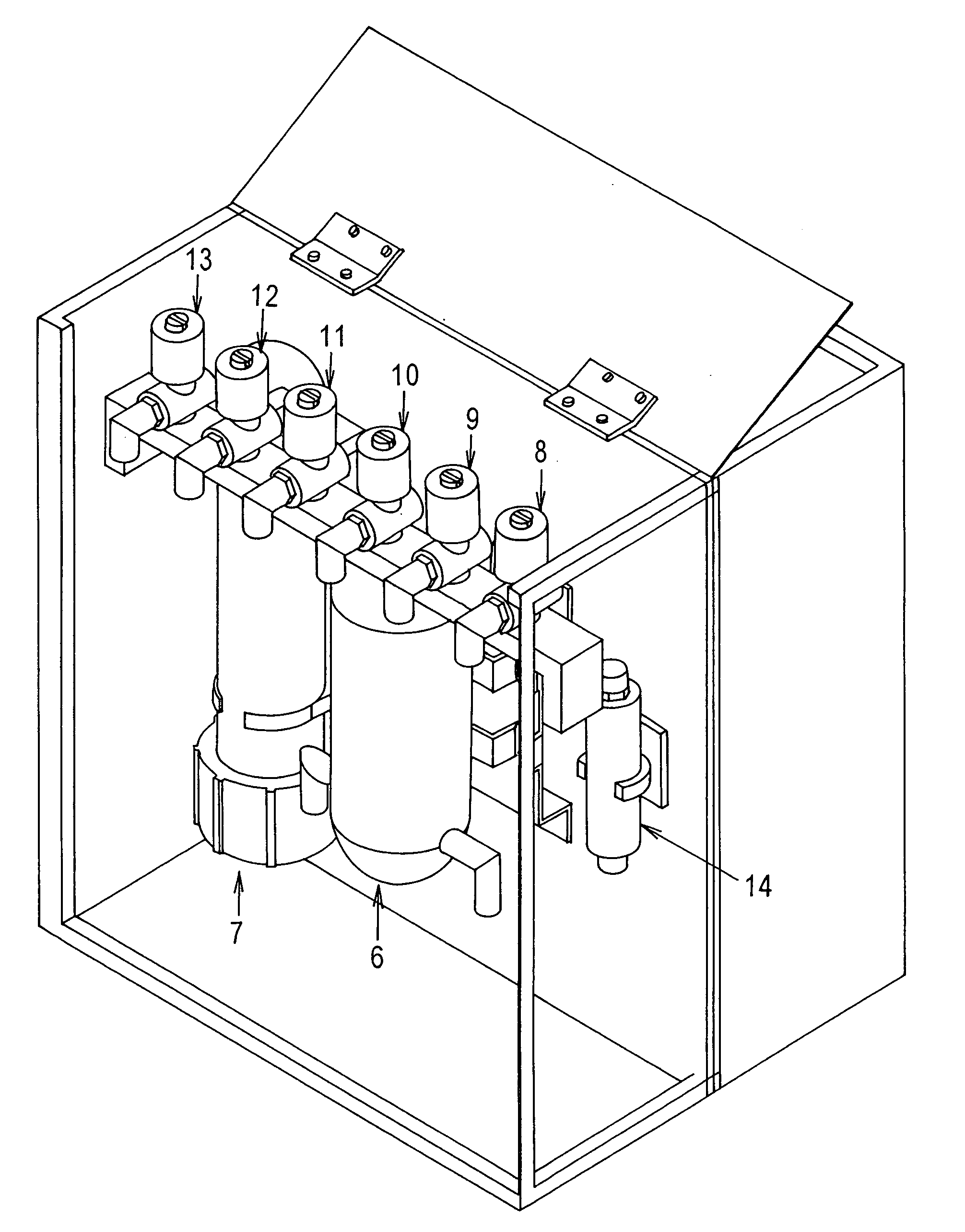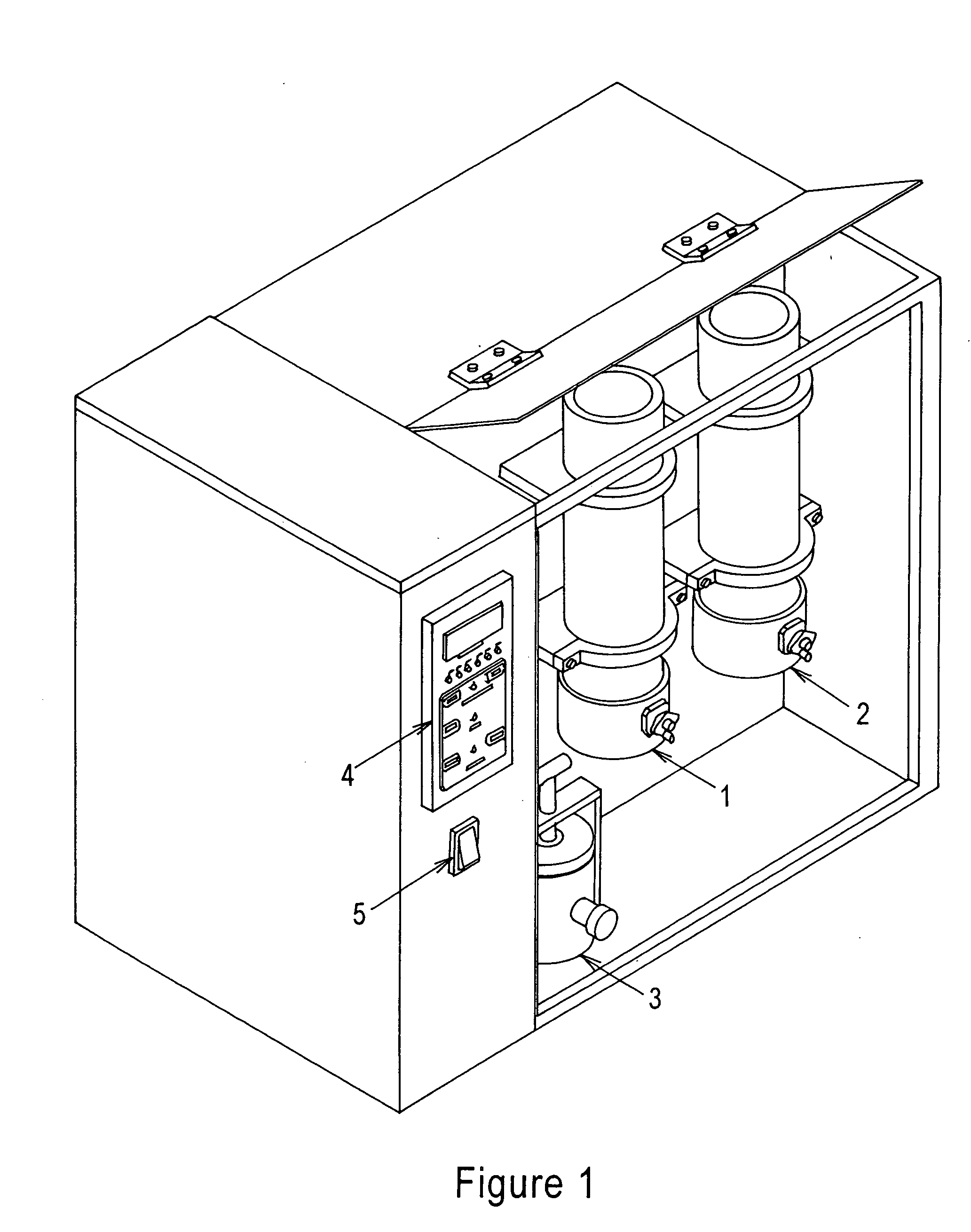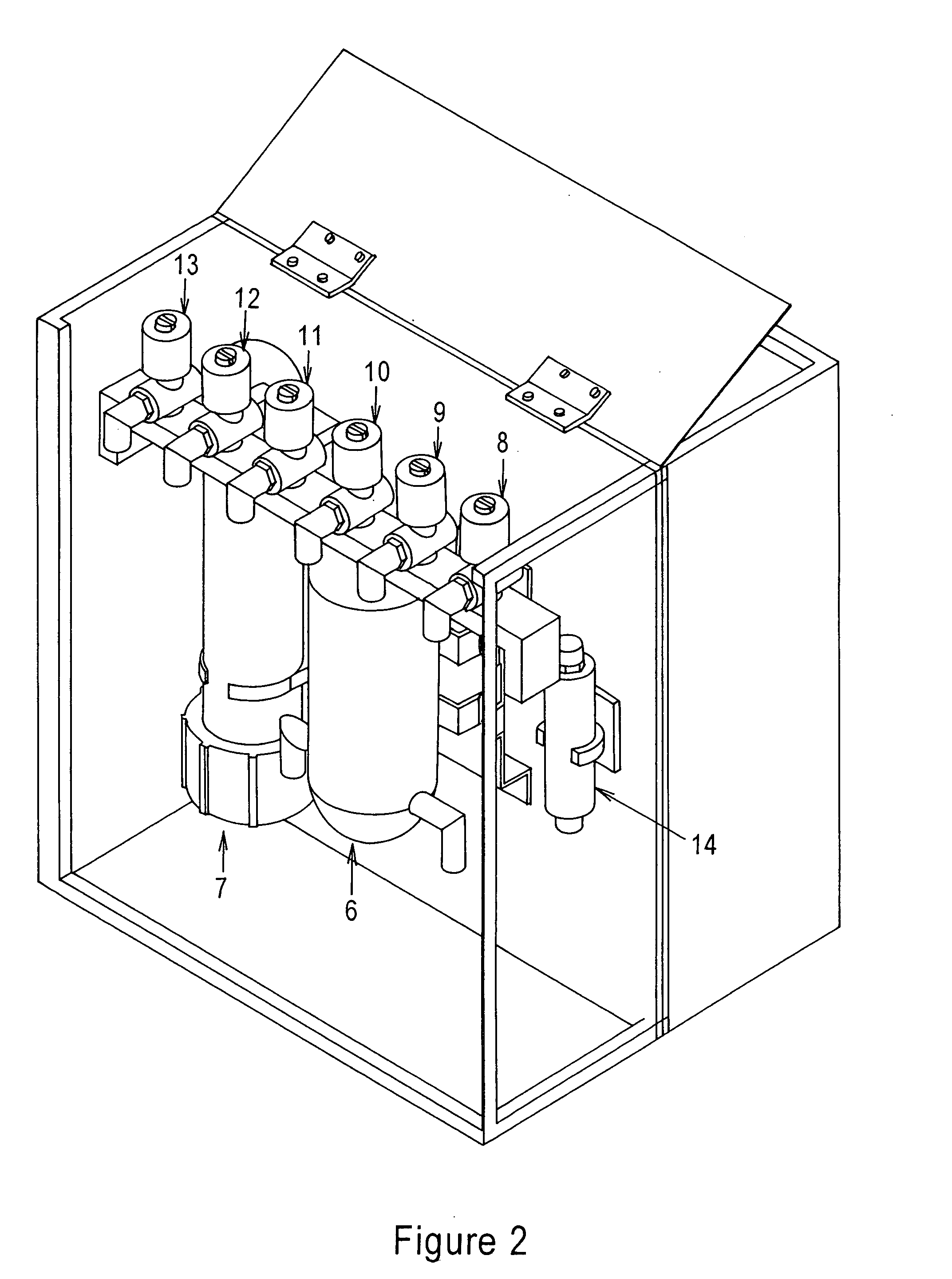Improvised device for concentrating the aqueous solution and a pocess thereof
a technology of aqueous solution and pocess, which is applied in the direction of moving filter element filters, filtration separation, separation processes, etc., can solve the problems of slow process of water removal on a rotavap, extract exposed to elevated temperatures for extended periods, and no solution reported for speeding up crude herbal extract processing for drug discovery research, etc., to reduce the overall time required, prevent degradation of bioactive molecules, and increase the potency and life of the membrane used
- Summary
- Abstract
- Description
- Claims
- Application Information
AI Technical Summary
Benefits of technology
Problems solved by technology
Method used
Image
Examples
example 1
[0126] 500 g of the seaweed, Ulva lactuca, was digested in 800 ml of cold water for 24 h and occasionally stirred. Dark amber coloured extract was separated, the volume was made up to 1L and taken in the extract solution container (FIG. 1). With the help of a pressure pump the dilute extract, prior to entering the membrane module, was made to pass through the filter vessel where suspending impurities were removed. The dilute dark coloured solution was the pumped into the membrane module where the reverse osmosis membrane allowed the water to pass and was collected as permeate and the concentrated solution was recycled to the extract container. Within a time period of 30 minutes, the permeate volume collected was 80 percent of the total feed volume and the concentrate retenate the balance. The permeate solution was analysed with high precision liquid chromatography (HPLC) and the results evinced no detectable polysaccharides. The permeate solution showed negative test for carbohydrat...
example 2
[0127] 350 g of the seaweed, Dictyota dichotoma, was digested in 600 ml hot water (70° C.) for 24 hours and occasionally stirred. After 24 hours, the dark coloured extract solution was separated, the volume was made upto 800 millilitres and taken in an extract solution container (FIG. 1). The dilute extract solution at 30° C. prior to passing through the membrane module was subject to filtration in the filter vessel to remove suspending impurities, with the help of a pressure pump. In the membrane module, the reverse osmosis membrane allowed water to pass, which was collected as permeate, and the concentrated solution was recycled to the extract container. Within a period of 20 minutes, 560 ml of permeate was collected and the remaining 240 ml was the concentrated retenate. The colourless permeate did not evince any detectable carbohydrate when tested with phenol sulphuric acid method. The high precision liquid chromatography (HPLC) analysis did not show the presence of any trace of...
example 3
[0128] The aqueous plant extract bearing code CIMAP 1 was concentrated with the help of the novel device by 60-70%. FIG. 5 shows the hplc traces of the original plant extract (A), the permeate from the extract (B), the recycling of permeate to obtain second permeate (C), and distilled water (D). The first permeate contains <5% of the plant constituents while the amount is negligible in the second permeate whose hplc trace shows a flat baseline as for distilled water.
PUM
| Property | Measurement | Unit |
|---|---|---|
| temperature | aaaaa | aaaaa |
| thickness | aaaaa | aaaaa |
| temperatures | aaaaa | aaaaa |
Abstract
Description
Claims
Application Information
 Login to View More
Login to View More - R&D
- Intellectual Property
- Life Sciences
- Materials
- Tech Scout
- Unparalleled Data Quality
- Higher Quality Content
- 60% Fewer Hallucinations
Browse by: Latest US Patents, China's latest patents, Technical Efficacy Thesaurus, Application Domain, Technology Topic, Popular Technical Reports.
© 2025 PatSnap. All rights reserved.Legal|Privacy policy|Modern Slavery Act Transparency Statement|Sitemap|About US| Contact US: help@patsnap.com



